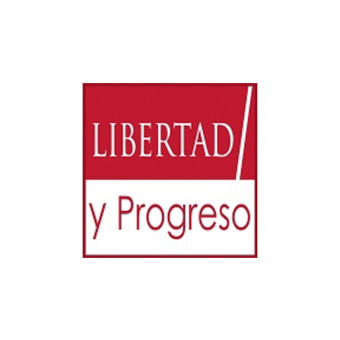The following is a statement of principles on medicines procurement collectively issued by think tanks from Argentina, Brazil, Chile, Colombia and Mexico. We call upon governments to use more modern approaches to procurement to ensure spending achieves the most possible, and patients receive the best quality care.
Summary of principles
- To promote health systems sustainability and improved patient outcomes, Latin American countries should use procurement models that look at the value of medicines across their entire life-cycle, rather than focusing solely on price.
- Competition that results in one single supplier is not real competition. Latin American countries should prioritise procurement models that promote patient choice, diversity of supply and sustainable market competition.
- To promote innovation, regional solidarity and medicines access, local procurement solutions should be prioritised over pooled, regional models.
- Procurement efforts should follow global best practices and promote open, fair and non-discriminatory competition.
- Latin American governments should promote sustainability and long-term innovation by respecting intellectual property rights for medicines.
- Procurement models should respect international trade obligations, particularly those enshrined in the WTO Government Procurement Agreement and bilateral and regional trade agreements, including transparency, predictability, national treatment, and permissible types of tendering.
Achieving universal health coverage (UHC) is a priority for Latin American governments. Yet health care systems in the region continue to face escalating costs, low-value care and huge disparities in patient outcomes.
Across Latin America and the Caribbean, health care costs are rising faster than GDP growth. Over the long term, this is unsustainable.
Up to 2.5% of total health spending across a range of Latin American countries is wasted on preventable hospitalisations.[1] Healthcare professionals attribute the main cause of medical inflation in the region to overprescribing by general practitioners or recommending that patients use too many services. [2]
Corruption is another major contributor to waste: 42% of those surveyed in Latin America by the OECD considers the health sector to be corrupt, higher than the 34% in 28 OECD countries. Moreover, bribery rates in public health centres reaches 11% across 18 LAC countries.[3]
All these factors raise concerns about the sustainability of Latin American healthcare systems, particularly as most countries draw funding largely from public sources.
These pressures must be set against a background of generally insufficient public funding. Latin American countries are attempting to achieve universal healthcare despite committing public health expenditures considerably beneath the PAHO/WHO target of 6% of GDP (in 2017, 6.61% in Argentina, 4% in Brazil, 4.5% in Chile, 4.9% in Colombia and 2.84% in Mexico).[4]
Many Latin American governments have responded to these pressures by attempting to contain expenditures on medicines, notably by using public procurement as a tool to drive down drug prices paid by public purchasers.
While this may prove effective for basic healthcare commodities for which there are multiple suppliers, such blunt tools will likely jeopardise access to newer health technologies that offer transformative potential to healthcare systems and patients. A more holistic approach is needed.
In Europe, a number of governments are moving away from price-focused medical procurement, encouraged by a 2014 EU directive on public procurement that asks contracting authorities to consider wider factors beyond price, such as quality, total costs over the product life cycle, and broader socioeconomic benefits for a given product or service. The objective is help healthcare systems achieve sustainability through judicious use of new technology.
As Latin America transitions towards higher-income, longer-living populations with greater levels of chronic disease, the challenge will be to derive far more value from healthcare spending. Traditional modes of procurement that focus exclusively on cost will be insufficient to this challenge.
1. Consider a wider range of factors beyond price when procuring medicines
Latin American countries’ procurement systems typically operate with the main objective of achieving the lowest price possible[5],[6] with little consideration of the broader value of medicines to patients and health systems. While price-based procurement can achieve discounts and save money in the short-term, in the long-term such approaches may not be in the best interests of patients and even cost more.
A focus on solely on price may ignore supplier attributes such as quality or predictability of supply, particularly important for generic medicines ordered in high volume. It may also bias procurement away from innovative medicines, reducing patient choice and undermining health progress.
In the long-run, focus on cost only will force manufacturers be more selective when choosing which procurement processes they would like to participate in, leading to a concentration of suppliers (less manufacturers’ participation). Through less competition the supply of medicines is threatened, especially if there are medicines with only one supplier left alone in the market. Some innovative medicines may not be available at all.
Taken at a global level, if every country simply focuses on the lowest price, there would be less money to invest in innovation, and in the long-term, fewer new medicines.
A better way would be to consider a range of factors other than price in the procurement process. Bids should not be awarded to the lowest cost bidder, but to the most qualified bidder that offers the overall best value for money across the life cycle of a medicine.
Procurement decisions should therefore consider in addition to price a comprehensive set of criteria that take into account the overall value of a medicine across its life-cycle, including:
- manufacturing quality
- reliability of supply
- improved outcomes for patients
- reduced total cost of hospitalisation and care
- and benefits to stakeholders such as health care workers.
By including these wider factors in procurement decisions Latin American healthcare systems will have an important lever for improving their quality of care and overall financial sustainability.
Concerned with escalating healthcare costs, low-value care, and huge disparities in patient outcomes several healthcare systems have adopted some forms of value-based procurement, including Denmark, the Netherlands, Ireland, Italy, Spain and the United Kingdom.
Latin American countries have yet to embrace value-based procurement, instead deploying a range of drug price negotiation tools such as international reference pricing, volume discounts, central and regional negotiations, complementary programs, discounts, rebates, or tax incentives.[7] In our view these approaches will become less sustainable as patient demands increase and new health technologies become more sophisticated and effective, but more expensive.
The issue is summarised by Andy Smallwood, head of sourcing for the Welsh public health system (NHS): “If you buy cheap, you buy twice. Lowest-price procurement leads to short-term consideration of the product in isolation from its use. Instead, we need suppliers to become more broadly involved in fixing our most urgent care pathway pain points, looking at efficacy, efficiency, and impact on patient outcomes.”[8]
To promote health systems sustainability and improved patient outcomes, Latin American countries should transition towards procurement models that consider the value of medicines across their entire life-cycle, rather than focusing solely on price.
2. Use procurement models that promote a diversity of suppliers and choice
In their drive to achieve the lowest possible price for tenders, many countries’ procurement systems operate under a system in which multiple suppliers will tender for a contract, but only one will be successful. Although undoubtedly effective at achieving the lowest price in the short term, this “winner takes all” model has a number of shortcomings:
- It can restrict patient choice by resulting in only one therapy being available for public reimbursement, restricting the ability of physicians to substitute different treatments for patients already on other therapies. It may also lead to automatic substitution of therapies against the wishes of a physician.
- It increases the risk of shortages. Under a “winner takes all” scenario, health systems will become dependent on one company to supply their entire requirements for the medicine in question. This creates significant risks, notably the risk of shortages or stock outs should that supplier experience unexpected interruption.
- It undermines market competition and may result in higher prices in the long term. A “winner take all” system may entrench the market power of the winning company, while forcing competitors to exit the market. This increased market power may give the winning company the opportunity to increase prices in the longer term. In China, the implementation of a regional “winner takes all” system of medicine procurement has led to several generic drug manufacturers exiting those specific markets. [9]
- It may increase prices in other areas. Tendering manufacturers may submit very low bids by subsidising it with revenues from their other products. The incentive would then be there to recoup these losses by raising prices of medicines outside of price regulated areas (for example those not on National Essential Medicines List or covered public funded health insurance)
Competition that results in one single supplier is not real competition. Latin American countries should prioritise procurement models that promote patient choice, diversity of supply and sustainable market competition.
3. Be sceptical of regional and international pooled procurement
For the past decade, Latin American countries have attempted to secure access to newer, more costly medicines by aggregating demand through either joint negotiations, pooled procurement, or both. However, initiatives such as MERCOSUR’s drug price database, and the Central American Integration System have met with little concrete success.[10] Questions over the solvency and viability of PAHO[11] raise uncertainty about the future of its Strategic Fund for procuring essential health products.
Meanwhile, there is little academic evidence on the impact of pooled procurement on pricing. Many agencies have reported lower prices and increased drug quality with pooled procurement, but there is little systematic evidence to support this.[12]
Pooled procurement models have in the past been able to achieve a single low price for generic products thanks to intense competition between multiple potential suppliers. As procurement expands to include more innovative health technologies – including on-patent medicines – achieving the best price through pooled procurement becomes more complicated. With far fewer suppliers of particular categories of innovative medicine, it becomes more difficult for a pooled procurement agency to leverage its buying power to secure deep discounts.
Pooled procurement also has the potential to undermine access to medicine by disrupting differential pricing strategies, increasingly used by manufacturers of patented medicines to maximise sales to low and middle-income countries while maintaining their profitability in developed markets. By setting different prices according to the economic status of a country, this approach maximises consumer welfare by increasing access to medicines while protecting revenues necessary to reinvest in future innovation.
Under such a scenario, a medicines manufacturer will set a different price for each country within a region. If a range of low and middle-income countries enter into a pooled procurement arrangement, the supplier will charge a weighted average of the prices it would have charged to each the countries in the group – higher than the poorest would have otherwise paid, but cheaper than the richest. A unified price across an economically diverse group of countries is a regressive outcome, benefitting the richest at the expense of the poorest. This could also risk the political cohesion of the pool, as the poorest country may try and strike a deal outside the pool to secure a lower price.
To promote innovation, regional solidarity and medicines access, local procurement solutions should be prioritised over pooled, regional models.
4. Ensure contracts are awarded according to fair, non-discriminatory and open processes
The goal of the public procurement of pharmaceuticals is to purchase sufficient quantities of high-quality pharmaceuticals at cost-effective prices for the population. This goal can be undercut if corruption infiltrates the procurement process. Corruption can occur at every stage of procurement. At the pre-bid stage, bids may drafted to favour a particular company or information about new contracts distributed in an unequal manner. At the bidding stage, the tender may be influenced by bribery or extortion, or other conflicts of interest may influence proceedings.[13] When the procurement process is compromised it can cause medicine shortages, inflated drug prices and the infiltration of falsified and substandard medicines into the health system.
Likewise, the potential benefits of competition may also be lost if specific companies or classes of companies are excluded or discriminated against during tendering. Local manufacturers may be prioritised at the expense of foreign suppliers, for example, even though the latter may offer better value for money. Such discrimination has the objective of boosting local manufacturing sectors,[14] but it is an unproven approach that undermines the overall purpose of public procurement: securing the highest quality medicines at the most cost-effective price.
Procurement efforts should follow global best practices and promote open, fair and non-discriminatory competition.
5. Respect intellectual property rights
Another form of procurement discrimination is when governments override intellectual property rights of on-patent medicines in order to award procurement contracts to manufacturers of generic versions. A number of Latin American governments have recently issued compulsory licenses (Colombia) or amended legislation to promote the use of compulsory licenses (Chile, Ecuador, El Salvador, and Peru) with the objective of securing cheaper medicine prices.
The use of such drastic non-market interventions as a cost-containment tool is ultimately self-defeating. In particular, compulsory licenses undermine legal certainty and make markets less attractive for launching innovative medicines, jeopardising the availability of future innovative medicines in the region. Attacking IP rights also undermines wider efforts by economic ministries and agencies to increase economic growth through innovation.
Latin American governments should promote sustainability and long-term innovation by respecting intellectual property rights for medicines.
[1] Guanais, F., R. Gómez-Suárez and L. Pinzón (2012), “Series of Avoidable Hospitalizations and Strenghening Primary Health Care: Primary Care Effectiveness and the Extent of Avoidable Hospitalizations in Latin America”, Inter-American Development Bank Discussion Paper, https://publications.iadb.org/en/publication/11805/series-avoidable-hospitalizations-and-strengthening-primary-health-care-primary
[2] 2019 Global Medical Trends Survey Report, Willis Towers Watson
[3] OECD/The World Bank (2020), Health at a Glance: Latin America and the Caribbean 2020, OECD Publishing, Paris, https://doi.org/10.1787/6089164f-en.
[4] https://data.worldbank.org/indicator/SH.XPD.GHED.GD.ZS?locations=BR-CO-AR-MX
[5] https://www.tandfonline.com/doi/full/10.1080/20016689.2019.1601060
[6] https://www.sciencedirect.com/science/article/pii/S2212109918303625#tbl2
[7] https://www.sciencedirect.com/science/article/pii/S2212109918303625#tbl2
[8] https://www.bcg.com/publications/2020/procurement-unlocks-value-based-health-care
[9] W Zhang, D Guh, H Sun, CA Marra, LD Lynd, and AH Anis. The impact of price-cap regulations on exit by generic pharmaceutical firms. Med Care.. 2016;;54::884–90. . DOI: 10.1097/MLR.0000000000000577.
[10] https://aulablog.net/2019/02/19/latin-america-takes-on-big-pharma/
[11] https://www.opendemocracy.net/en/democraciaabierta/pan-american-health-organization-in-danger/
[12] https://www.knowledgeportalia.org/pooled-procurement
[13] https://www.ncbi.nlm.nih.gov/pmc/articles/PMC7170361/
[14] https://www.tandfonline.com/doi/full/10.1080/17441692.2012.719027








